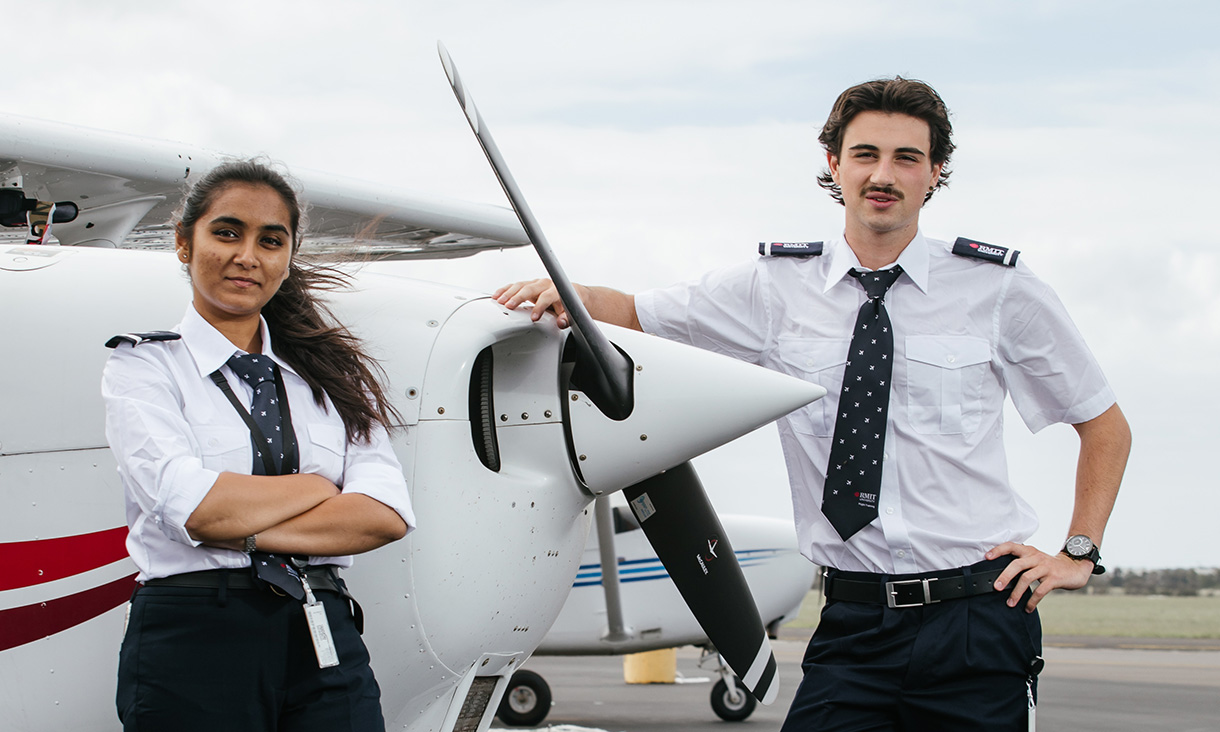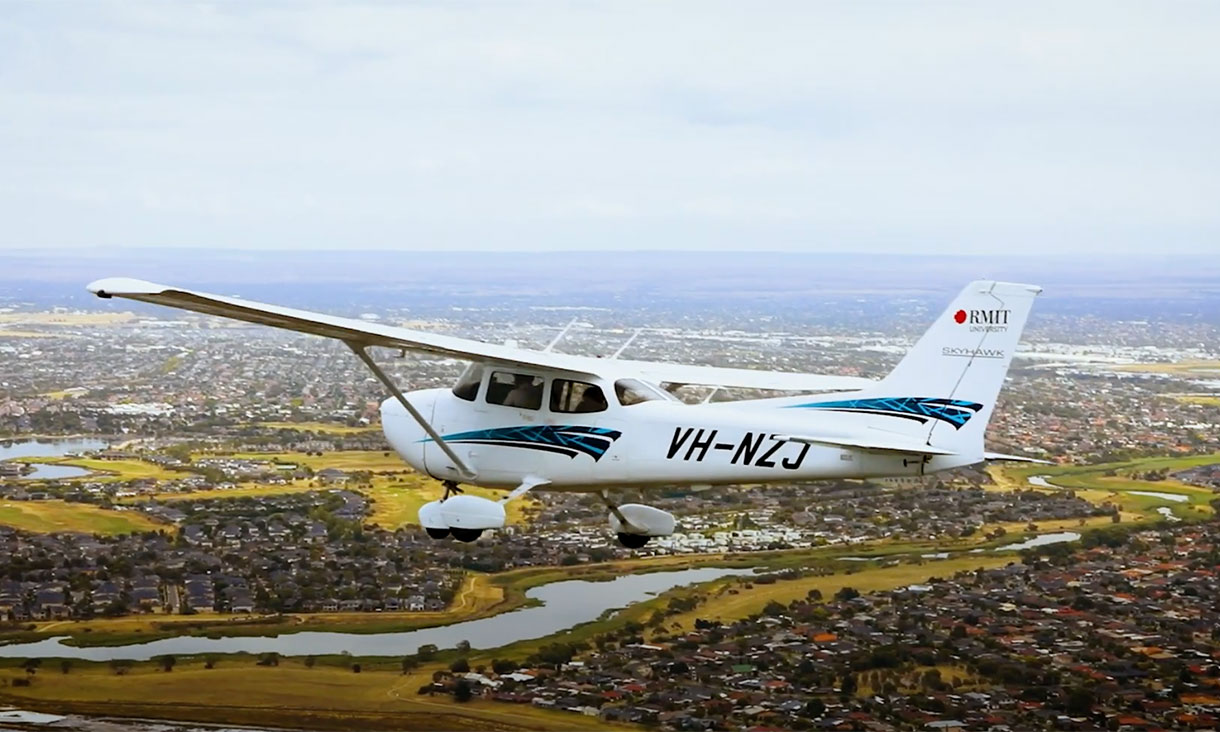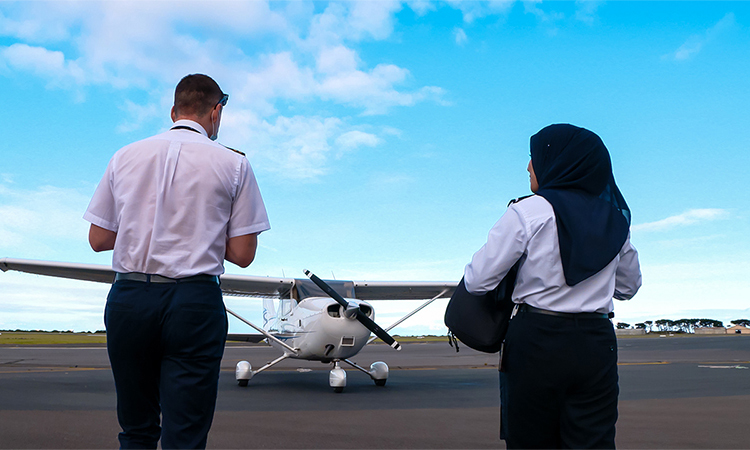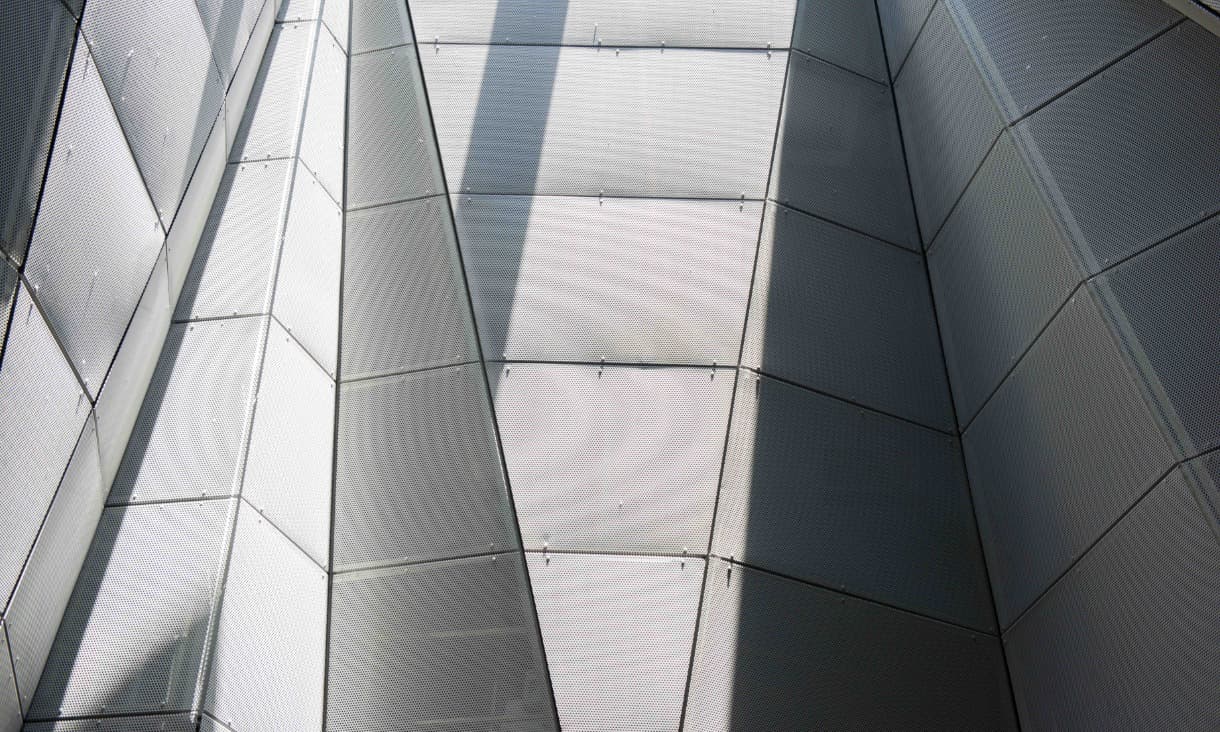The sky's the limit
As an RMIT flight training graduate, there are a variety of paths you can take – from undertaking flight instructor training and working as an instructor to working in emergency services to high-performance activities such as the Royal Flying Doctors Service or in the role of first officer in major airlines.
Major airlines typically require approximately 1,500 hours of total time for direct entry First Officers. Some charter companies might require as few as 200–300 hours.
With further experience and managerial qualifications, you'll be able to seek positions as a chief pilot, fleet manager and flight operations manager or inspector.
You can also take your career to new skies with an Australian pilot license, which can be converted for use in other countries, upon meeting requirements.







